Hey, Mars, you’ve got company. Looks like there’s a second “red planet” in the Solar System — Pluto. Color images returned from NASA’s New Horizons spacecraft, now just 10 days from its encounter with the dwarf planet, show a distinctly ruddy surface with patchy markings that strongly resemble Mars’ appearance in a small telescope.
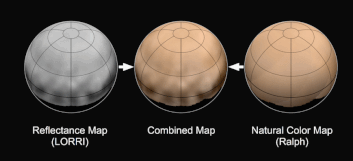
On Mars, iron oxide or rust colors the planet’s soil, while Pluto’s coloration is likely caused by hydrocarbon molecules called tholins that are formed when cosmic rays and solar ultraviolet light interact with methane in Pluto’s atmosphere and on its surface. Airborne tholins fall out of the atmosphere and coat the surface with a reddish gunk.
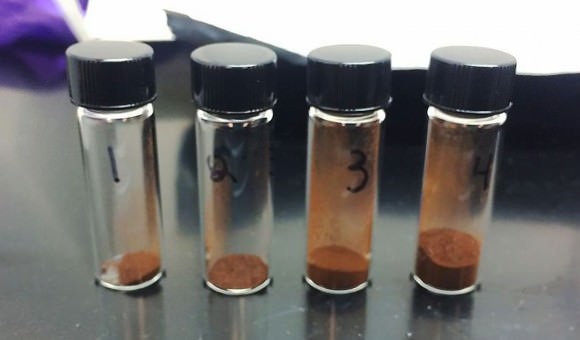
Credits: Chao He, Xinting Yu, Sydney Riemer, and Sarah Hörst, Johns Hopkins University
A particular color or wavelength of UV light called Lyman-alpha is most effective at stimulating the chemical reactions that build hydrocarbons at Pluto. Recent measurements with New Horizons’ Alice instrument reveal the diffuse glow of Lyman-alpha light all around the dwarf planet coming from all directions of space, not just the Sun.
Since one of the main sources of Lyman-alpha light besides the Sun are regions of vigorous star formation in young galaxies, Pluto’s cosmetic rouge may originate in events happening millions of light years away.
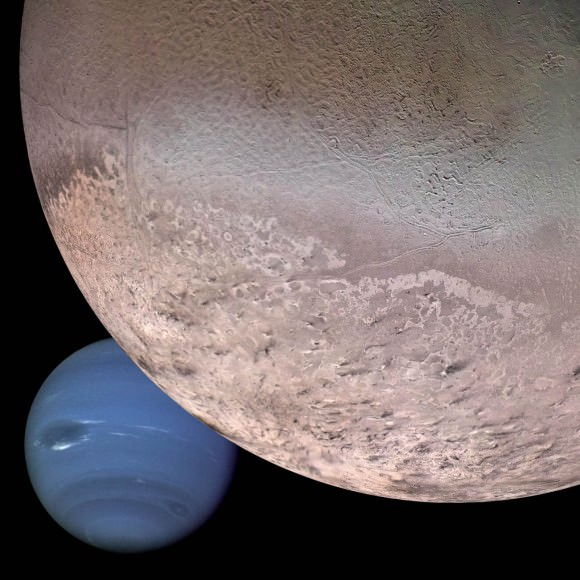
“Pluto’s reddish color has been known for decades, but New Horizons is now allowing us to correlate the color of different places on the surface with their geology and soon, with their compositions,” said New Horizons principal investigator Alan Stern of the Southwest Research Institute, Boulder, Colorado.
Tholins have been found on other bodies in the outer Solar System, including Titan and Triton, the largest moons of Saturn and Neptune, respectively, and made in laboratory experiments that simulate the atmospheres of those bodies.
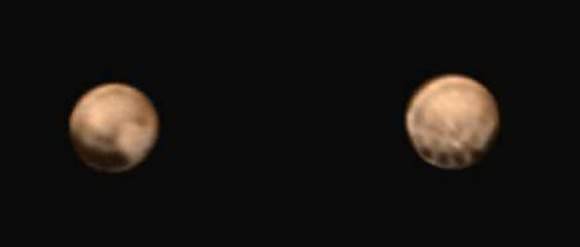
As you study the photos and animation, you’ll notice that Pluto’s largest dark spot is redder than the most of the surface; you also can’ help but wonder what’s going on with those four evenly-spaced dark streaks in the equatorial zone. When I first saw them, my reaction was “no way!” They look so neatly lined up I assumed it was an image artifact, but after seeing the rotating movie, maybe not. It’s more likely that low resolution enhances the appearance of alignment.
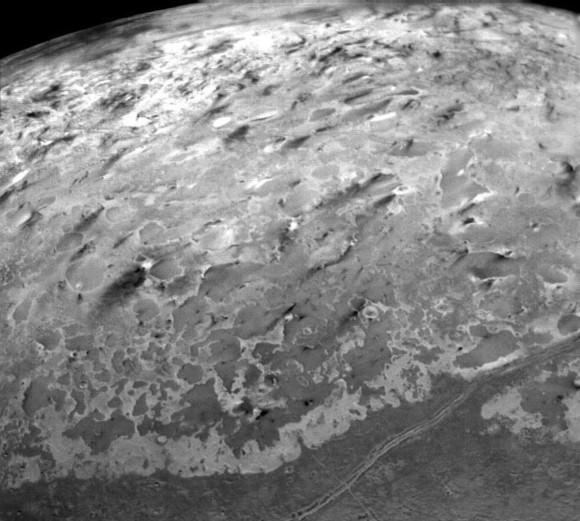
But what are they? Located as they are on the Charon-facing side of Pluto, they may be related to long-ago tidal stresses induced by each body on the other as they slowly settled into their current tidally-locked embrace or something as current as seasonal change.
Voyager 2 photographed cyrovolcanos at Triton during its 1989 flyby of the Neptune system. Nitrogen geysers and plumes of gas and ice as high as 5 miles (8 km) were seen erupting from active volcanoes, leaving dark streaks on its icy surface.
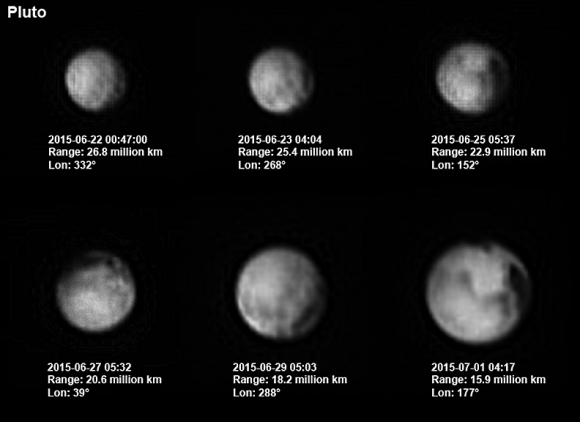
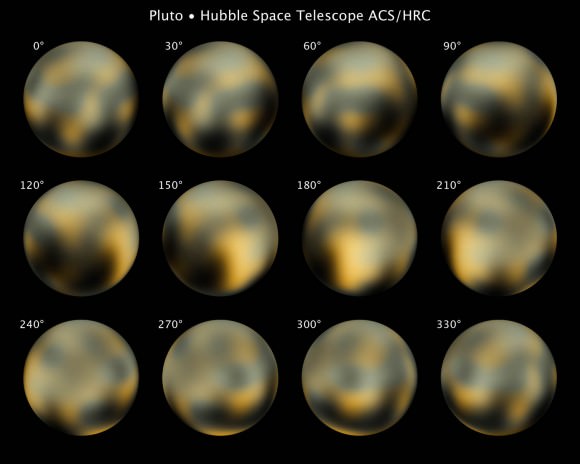
Seasonal heating from the Sun is the most likely cause for Triton’s eruptions; Pluto’s dark streaks may have a similar origin.

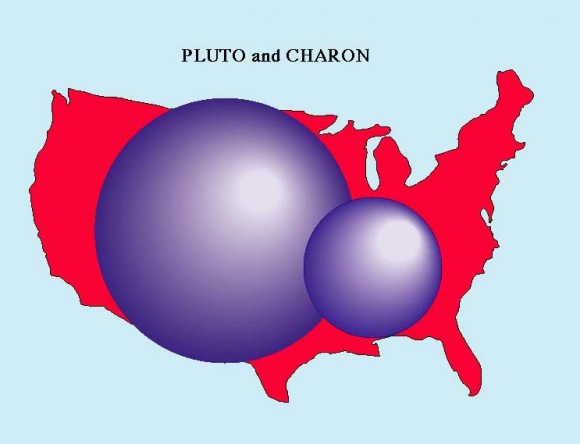
Today, New Horizons lies just 7.4 million miles (11.9 million km) from its target. Sharpness and detail visible will rapidly improve in just a few days.
“Even at this resolution, Pluto looks like no other world in our Solar System,” said mission scientist Marc Buie of the Southwest Research Institute, Boulder in a recent press release.
Indeed!

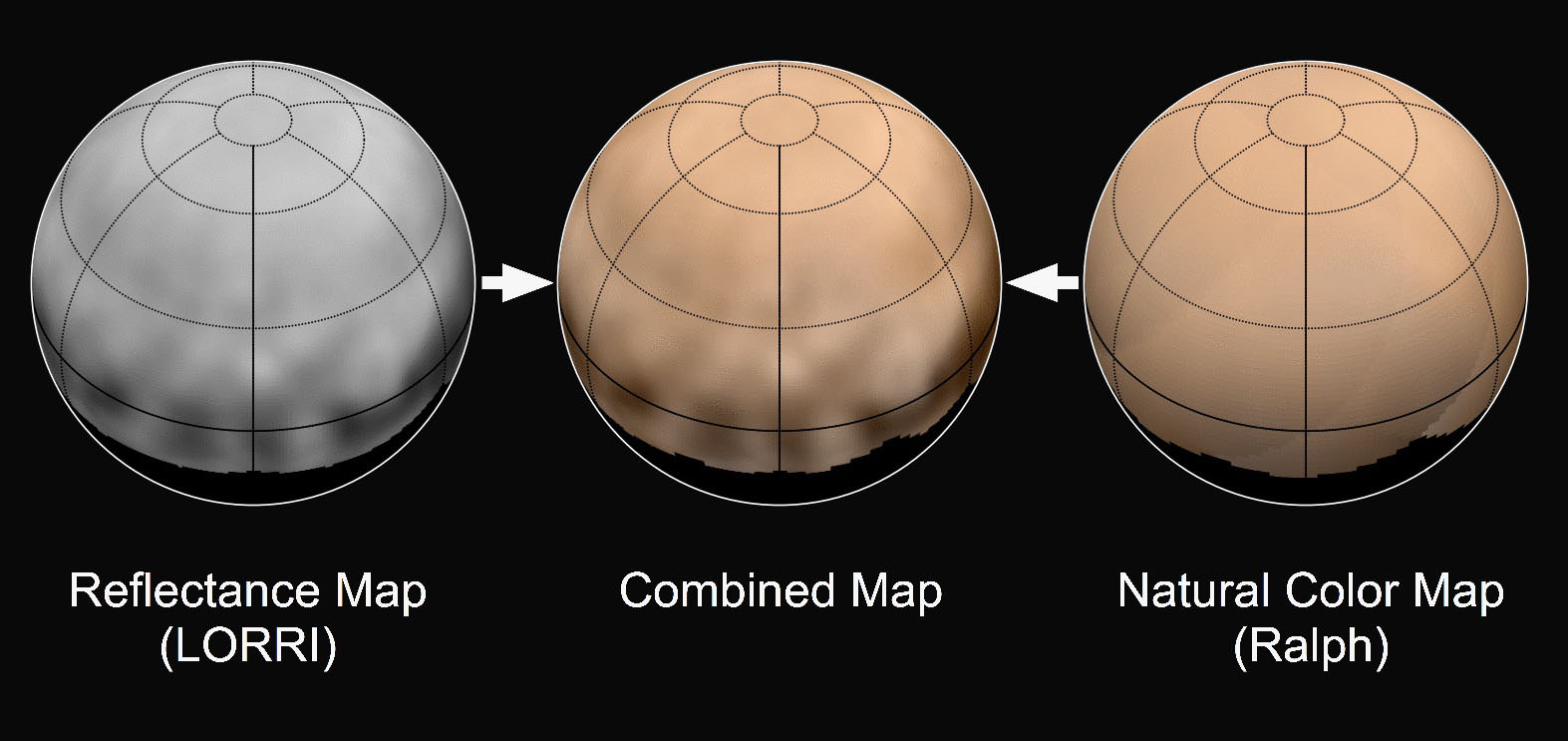
I had wondered about that possible major crater. If it really was there, was big, and still had substantial vertical relief it implied to me youth – and such a major impact would kick out stuff some of which would fall into the solar system as comets probably. I looked to see if anyone had done work looking for a “Pluto family of comets” like there are for Jupiter etc and there are – but nothing very definitive and none where these comets are likely to have come from the surface of Pluto (so having their aphelion in the right place in space somewhere near the orbit of Pluto.)
BTW http://csep10.phys.utk.edu/astr161/lect/comets/halley.html does a nice job showing that Comet Halley, though it’s aphelion is “near” the orbit of Pluto is actually far away because of different inclinations. But that’s as close as I could get to any comment listed with an aphelion at the orbit of Pluto.
There have been a handful of comets that have passed very close the orbital path of Pluto but not when Pluto was there.
One long chase after an idea… but it looks like not so for more than one reason.
Steven,
Thanks for your thoughts on the matter. Yes, the feature was tantalizing but unlikely.
Interesting idea. Taking a rock off Pluto and putting it in an orbit with aphelion near Pluto but perihelion in the inner Solar System would require a removal of a lot of orbital energy. I haven’t run the numbers, but I suppose it would be much more than the energy required to get the rock off Pluto’s surface. It’s like launching MESSENGER off the Earth was not that big a deal but getting it to Mercury took multiple planet flybys to remove that energy.
I think a family of debris chunks strung out along Pluto’s orbit would be a more likely outcome.
Some of the debris would go the other direction from the orbital motion. Lots of retrograde comets out there. But yes number crunching would be pretty useful if still on a speculative branch….
pluto has this uncanny feature not seen in other (dwarf) planets.
a system gravity outside of the main body. Pluto.
those 4 spots seem to be at the Charon facing side.
Maybe a (Pluto year) anual deposit?
Any other place on Pluto would have a higher relative orbital velocity.
So it’s a red dwarf planet!
Users of Celestia have long known Pluto is red.